Out my window, it’s a cold and gray day. The pandemic goes on. But I still have good books and wild spaces, always a source of refuge, inspiration and escape. Maybe you’re the same.
Here are some books that combine great writing with the natural world. You’ll find stories of healing and hope, but also those that challenge your ideas of nature and our place in it. Perfect reads for a winter’s evening.
-
Bird Brother
By Rodney Stotts, with Kate Pipkin
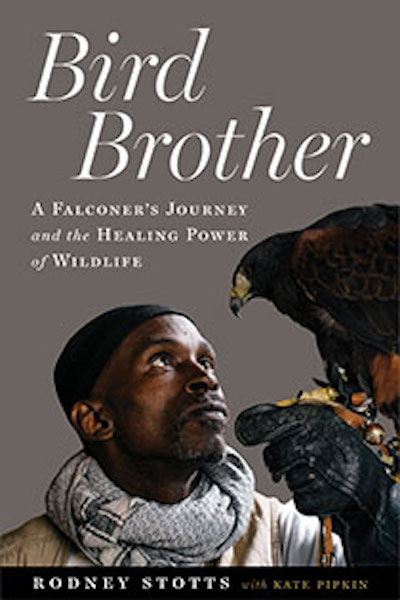
Rodney Stotts felt drawn to birds from an early age – an experience undoubtedly shared by many readers of this blog. But this is not the standard-issue memoir where a youthful Stotts roams woods and fields and becomes a naturalist. He grew up in Washington, D.C., surrounded by drugs and guns, the threat of early death a daily possibility.
Stotts turned to the only path he saw for an ambitious and hard-working young man, the path of a drug dealer. But then a job with the Earth Conservation Corps brought him in close contact with the birds of prey that always commanded his attention.
Stotts turned his intensity and focus towards falconry, eventually becoming a master falconer and wildlife educator. Keeping birds of prey is never easy, as anyone who has read other falconry books knows. But Stotts dealt with a particularly tough road, shadowed by incarceration, the deaths of family and friends, and racism.
But Stotts persevered and soon saw that falconry could bring the same meaning and purpose to others. Particularly inspirational is Stotts teaching his own son to be a falconer. As Stotts tells him, “This is not a game. This is not a hobby. This is not just a sport. This is a whole new lifestyle for you.”
And Bird Brother is not a typical bird book.
-
Birding in an Age of Extinctions
By Martin Painter
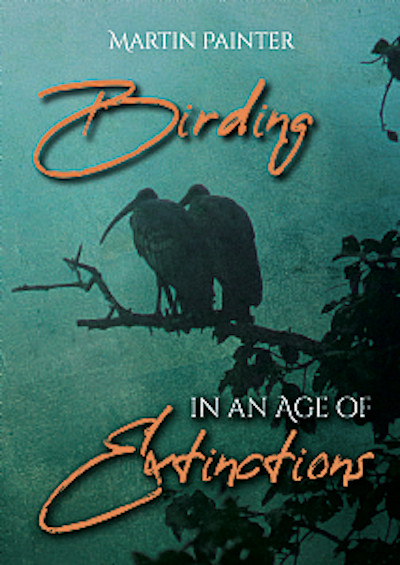
We are likely living during the best era in history to be birders and traveling wildlife enthusiasts. At first glance, that statement may seem like heresy. After all, bird populations are plummeting and pristine wildlife habitats have become rare. On the flip side, the relative ease of travel (at least, pre-pandemic), the quality of the optics and the extensive knowledge available means that birders can amass life lists that would have been impossible 50 or 100 years ago. An organized birding trip to the tropics can easily net hundreds of new species for participants.
But this comes with a down side. Many birds are easier to see now because entire populations are found in small habitat fragments. The birding industry has given rise to habituating birds to humans through feeding, making the whole experience less a nature experience than a form of stamp collecting. The habits of jet-setting birders may be endangering the very birds they love.
Global birder Martin Painter delves into the complexities, paradoxes and joys of modern birding in this new book from Whittles Publishing. It’s not a gloomy book; Painter clearly loves travel and finding new bird species. He acknowledges that birding can help protect many species and habitats, but he is also takes a critical eye at some birding practices. Are we authentic participants in nature or just ticking birds any way we can?
The result is a thorough look at modern birding, told through a series of adventures. He looks at the difference between the “patch lister” who only birds at the local park versus the globetrotter. He wonders about the ethics of rushing to see birds that will soon be gone. The result is not designed to make you question birding, but rather urge birders question some choices. Ultimately, you can enjoy birds without contributing to their demise. A much-needed antidote to the often self-aggrandizing genre of birding memoirs.
-
A Fine-Spotted Trout on Corral Creek
By Matthew Dickerson
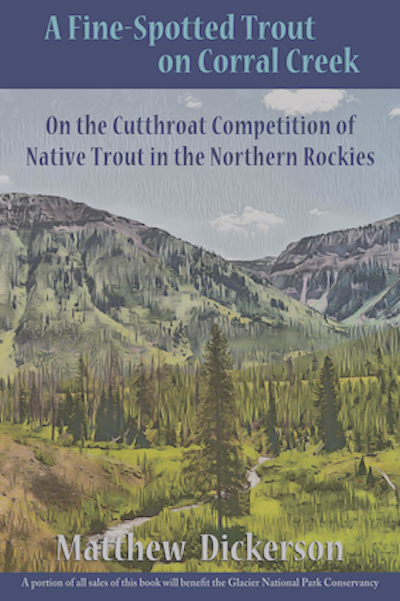
Flyfishing for native trout is one of my favorite things, in part because of the beauty of the fish and in part because of the places their pursuit takes you. Matthew Dickerson shares this passion in his wonderful new book, A Fine-Spotted Trout on Corral Creek.
As Dickerson notes, cutthroat trout – unlike many trout species – have not been widely stocked and distributed around the globe. They remain largely a fish of the American West, where they evolved into different subspecies and strains in various watersheds. They now only swim in a fraction of their native range, due to the usual range of threats, not the least of which is the introduction of non-native trout.
Dickerson goes searching for cutthroat trout – while also seeking answers about their future – in Wyoming, Montana and Colorado. The angling descriptions ring true: the pursuit of native trout is not about trophies or technical casting mastery. It’s an exploration into the fish’s habitat. This is not, in other words, a catalog of fish caught. It’s an immersion into the experience, of long hikes, the people you meet on the hikes, of flies lost in thick underbrush, of harlequin ducks and bears. Dickerson is not just someone obsessively casting into streams; he’s a reflective and astute observer. The perfect guide to native trout.
Along the journey, Dickerson interviews and fishes with biologists and others looking into the future of cutthroat trout. This is not always a happy story: invasive fish continue to swim into cutthroat rivers, warming waters pose additional threats and reintroduction and restoration results can be lackluster. But Dickerson sees hope, too. In no small part, that hope rests on those who appreciate these colorful fish, fly rod in hand.
-
Habitats of the World
By Iain Campbell, et al.
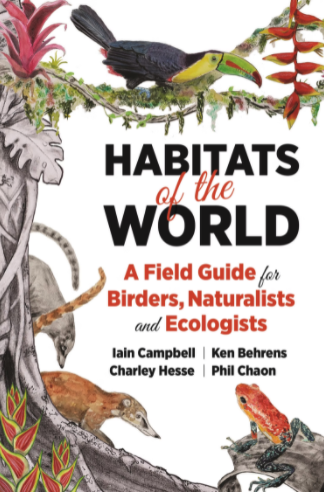
I often think I have a field guide for every possible occasion, but then a new one comes along to prove me wrong. Here is one I could not pass up: a new one from Princeton Field Guides, Habitats of the World. It covers every major land habitat on earth, 189 in all. You can find in-depth information on Australian Sandy Cays, Neotropical Dry-Oak Woodland and even Dragon Blood Semidesert, a botanically unique environment found only on several islands in the Indian Ocean.
Organized in a natural history guide format, each entry includes an ecological distribution, information on the wildlife found there and suggestions on where to see the habitat in its intact form.
Birders and naturalists will find much of this information useful if not indispensable. As a nature writer, this is a book I’ll refer to again and again. It’s a treasure trove of information, helping to understand the world’s biodiversity in a readable, visually compelling format.
-
A Thousand Trails Home
By Seth Kantner
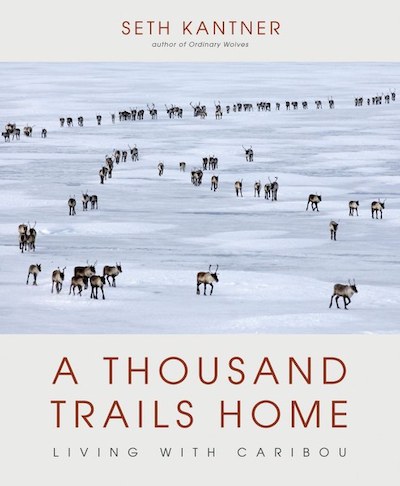
This is a book about caribou, to be sure. But this is not just the observations of a nature writer, or the warnings of environmental doom, even though in a way it is both those things. This is a book of intermingled destinies, of caribou and the people who rely on them. And it’s written by someone who has relied on them for more than 50 years.
Kantner grew up in a sod igloo homesteaded by his parents. Their life was a constant struggle to obtain meat and fur, and yet Kantner also conveys the genuine joy and beauty in that struggle.
This is simply a beautiful book, filled with writing that makes you pause and images to match. Perhaps most powerful is that Kantner never offers easy answers to the plight faced by caribou and humans. There are no simple heroes or cartoonish villains. He records the life of and with caribou in prose that is unsparing, heartbreaking and powerful. I could not put this one down. I suspect you will find the same.
-
Fuzz
By Mary Roach
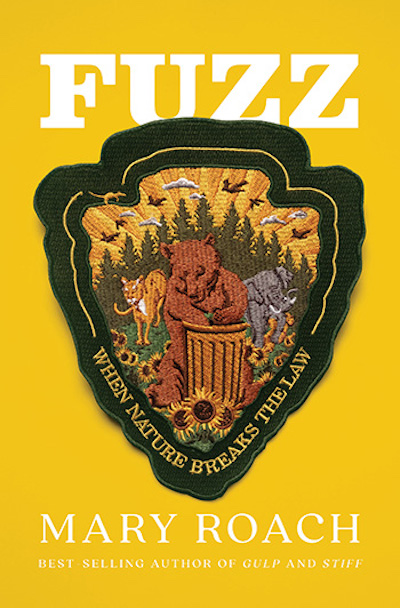
I see it every week on the Nextdoor app: someone who wants to live next to our foothills, but then despairs when a deer eats the shrubbery, a raccoon eats the cat food, or a coyote eats the cat. In Fuzz, popular science writer Mary Roach turns her attention to the science of human-wildlife conflict. It’s a rich vein to mine for Roach, a bestselling author known for plunging into the center of her stories with humor and plenty of pop culture references.
She spends time with dumpster-diving bears in ski resort towns, gulls trying to crash Vatican celebrations and the people trying to stop them in various lethal and non-lethal ways. It will perhaps be no surprise that the problem is often not the wildlife, but human behavior. She looks at research that aims, with varying degrees of success, at coexistence. Can we build a better scarecrow? Can genetically engineered mice offer more humane invasives control? And at the heart of it all: Can we learn to share our space with the wildlife whose space we are taking?




Great suggestions! Gives me books to ask for at the library. I’m no longer a book club person nor am I buying books anymore, but I’m using the heck out of my library
Thanks Matthew